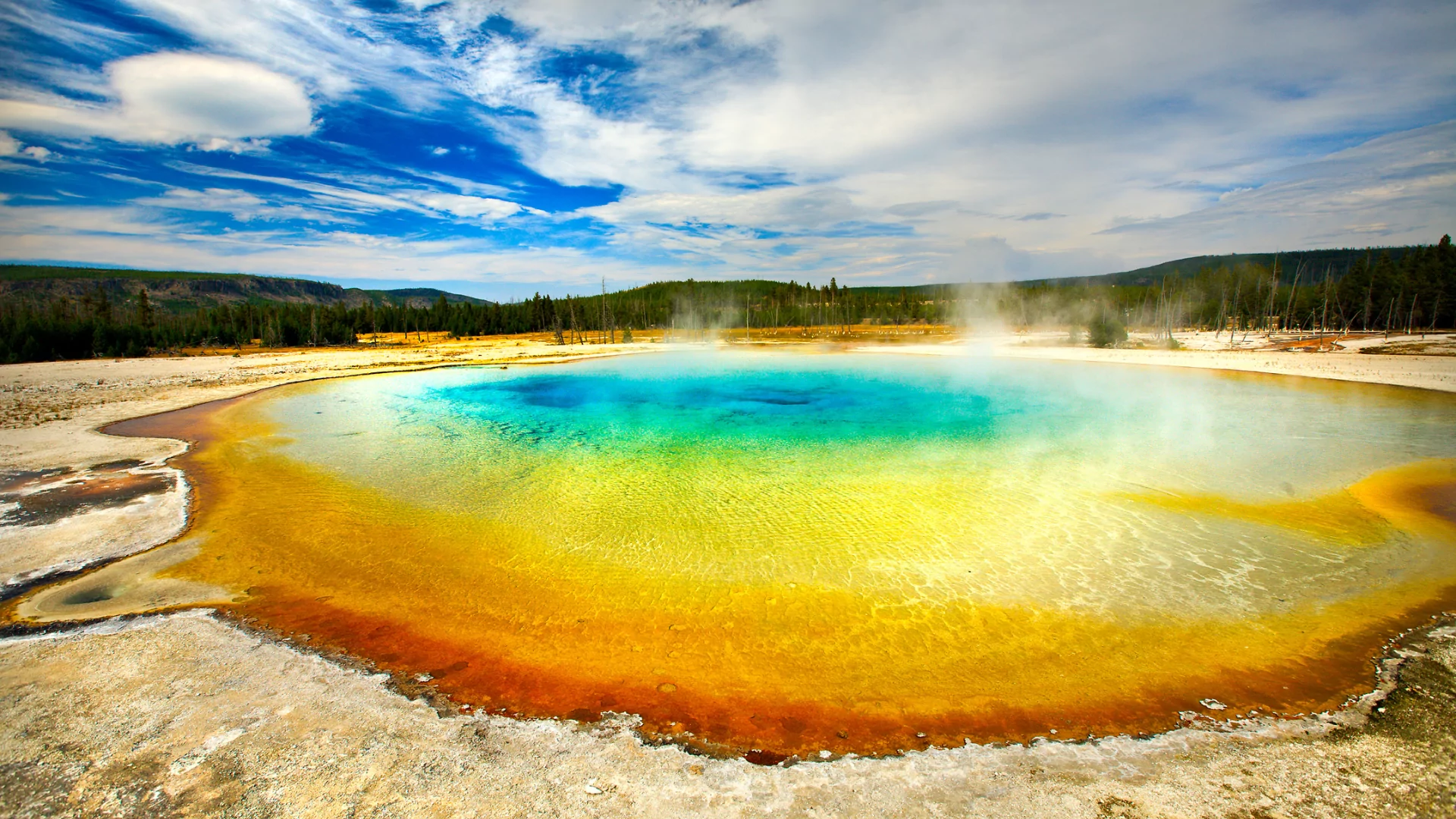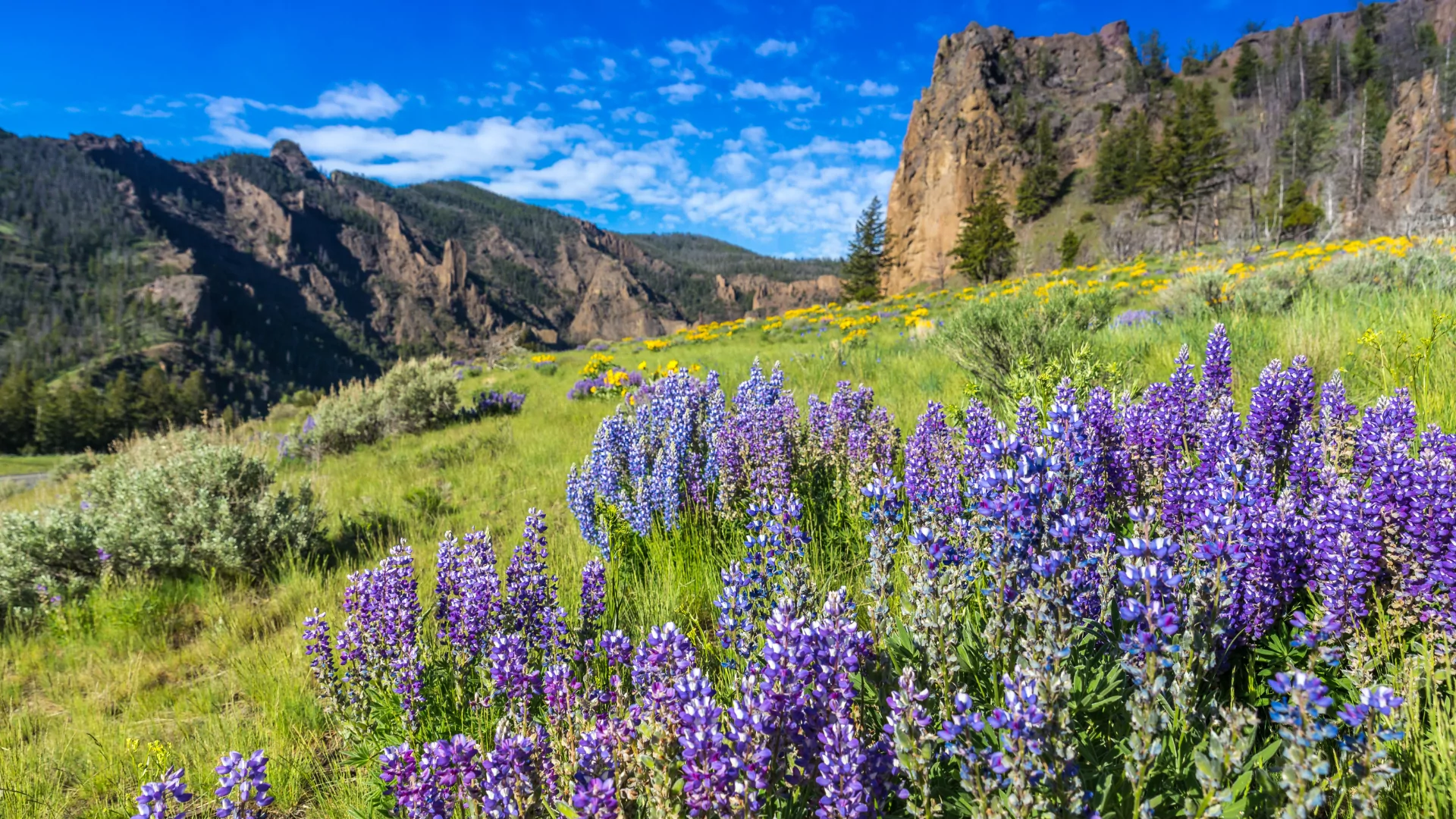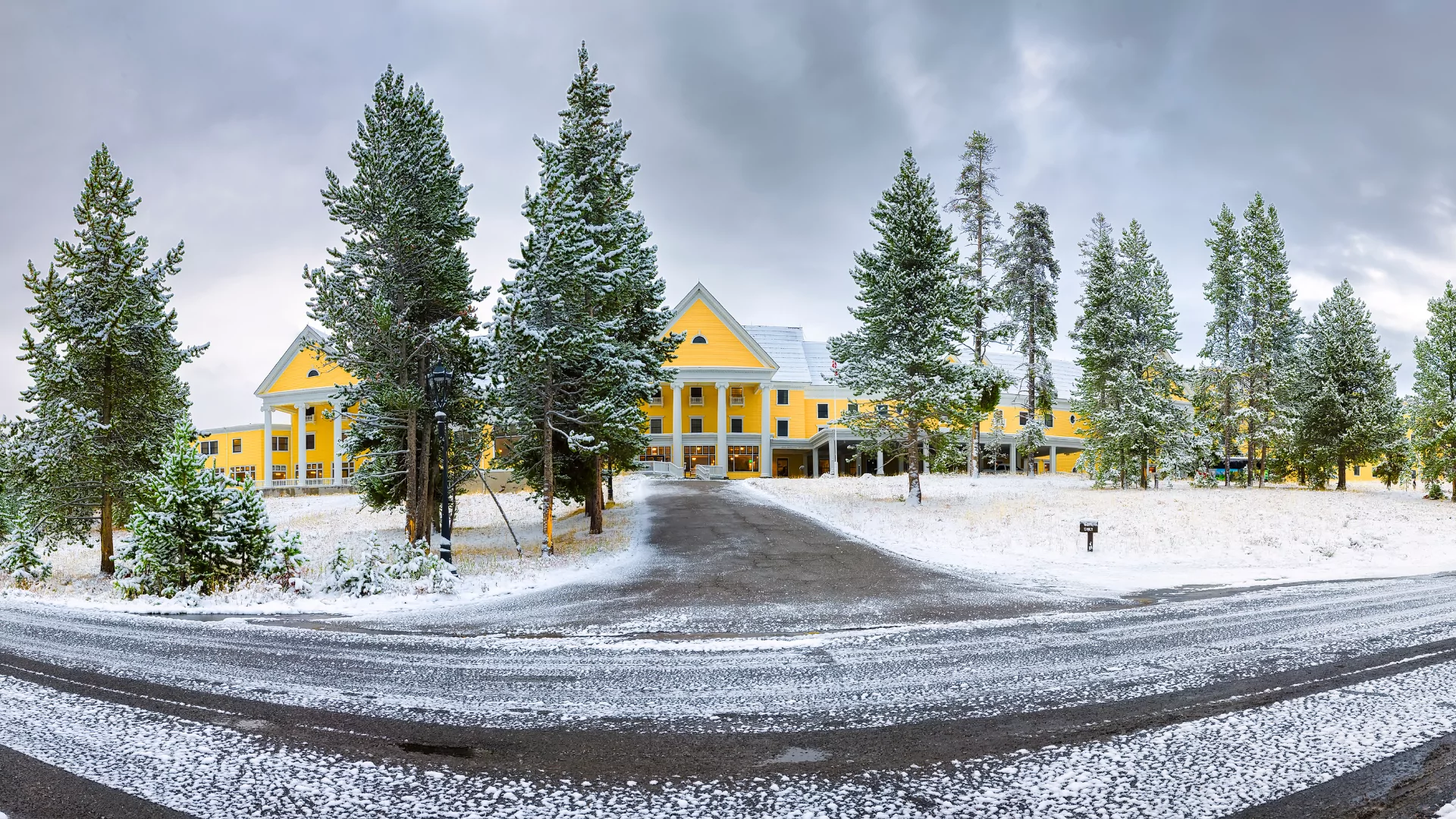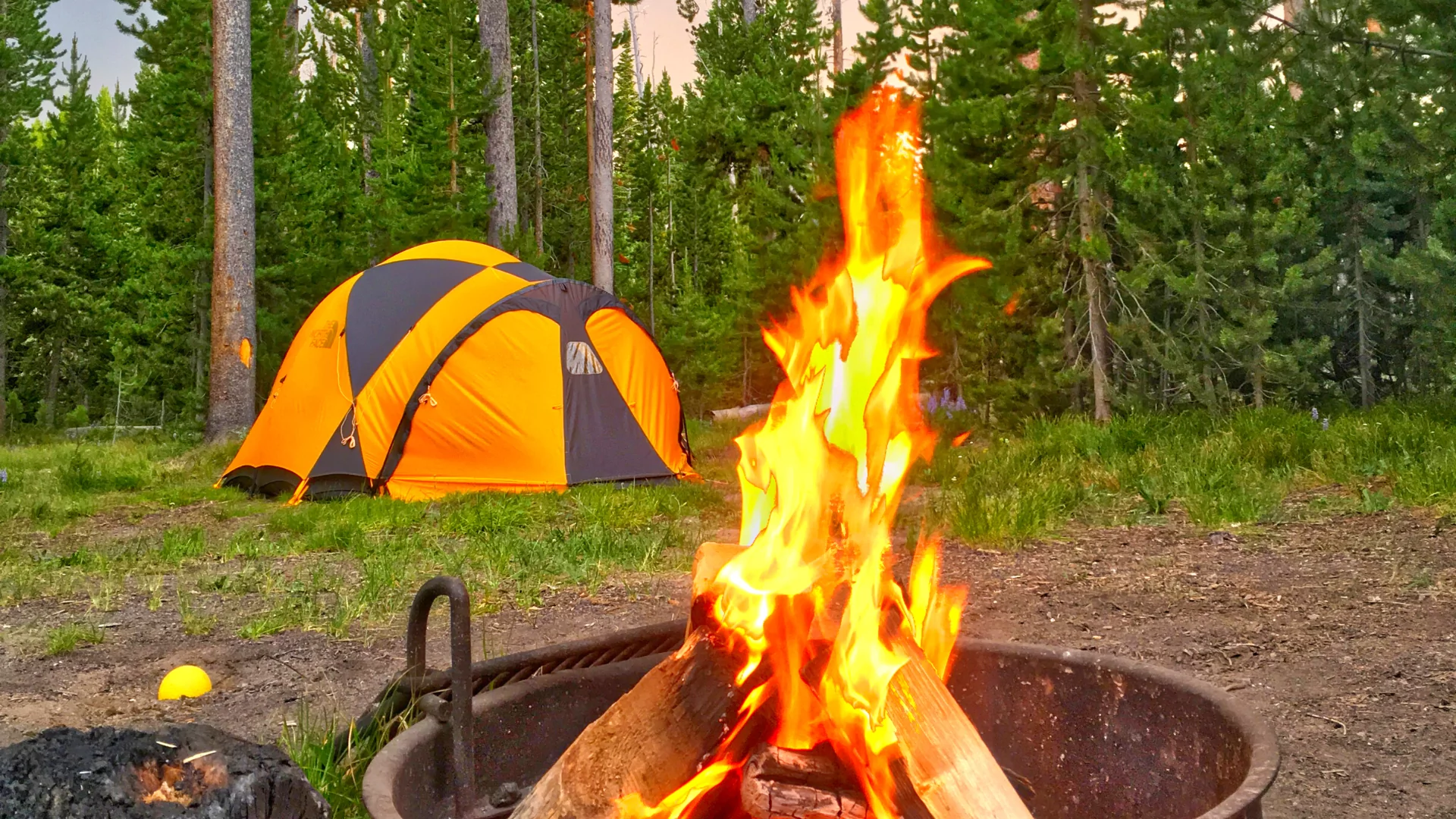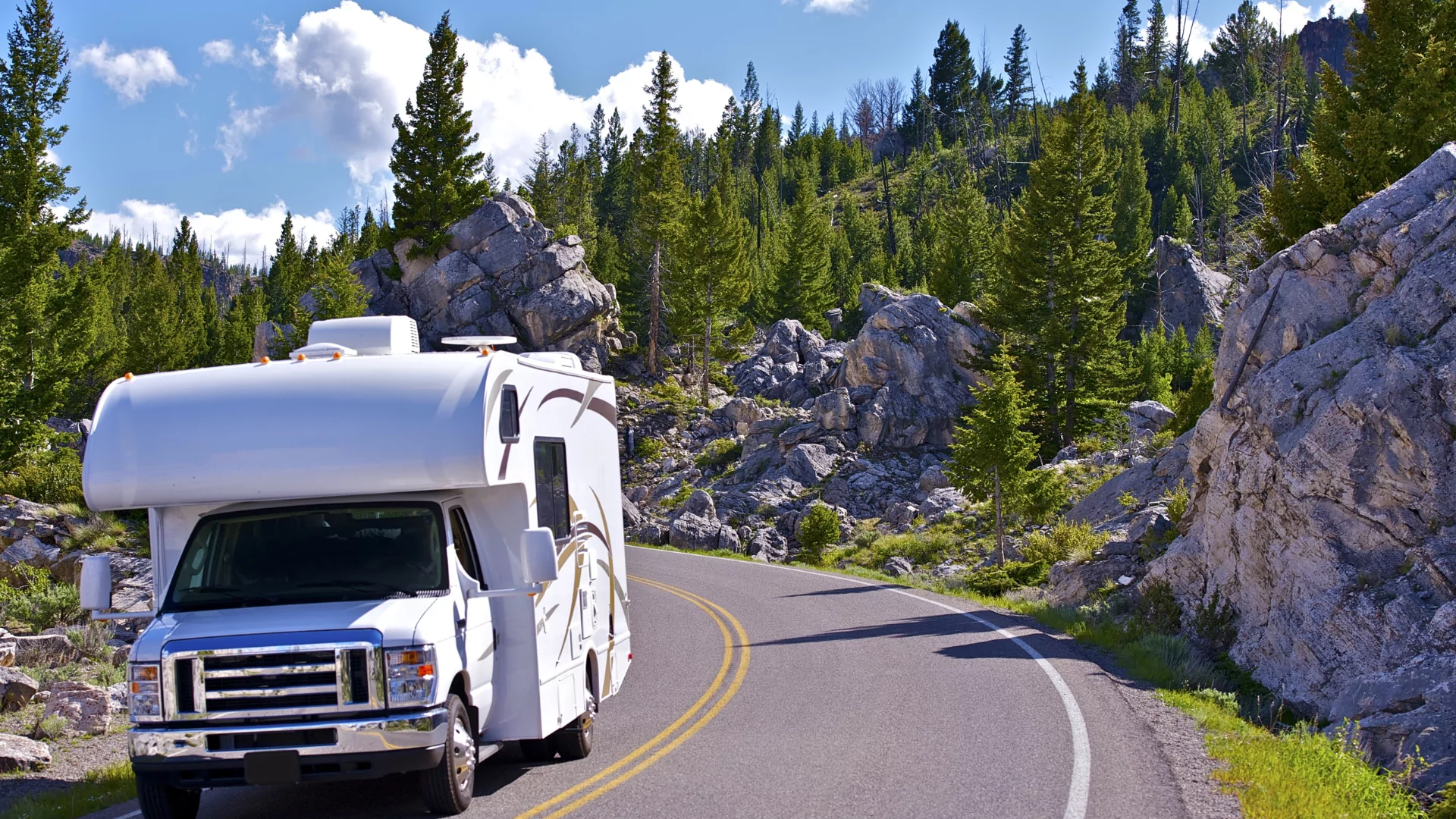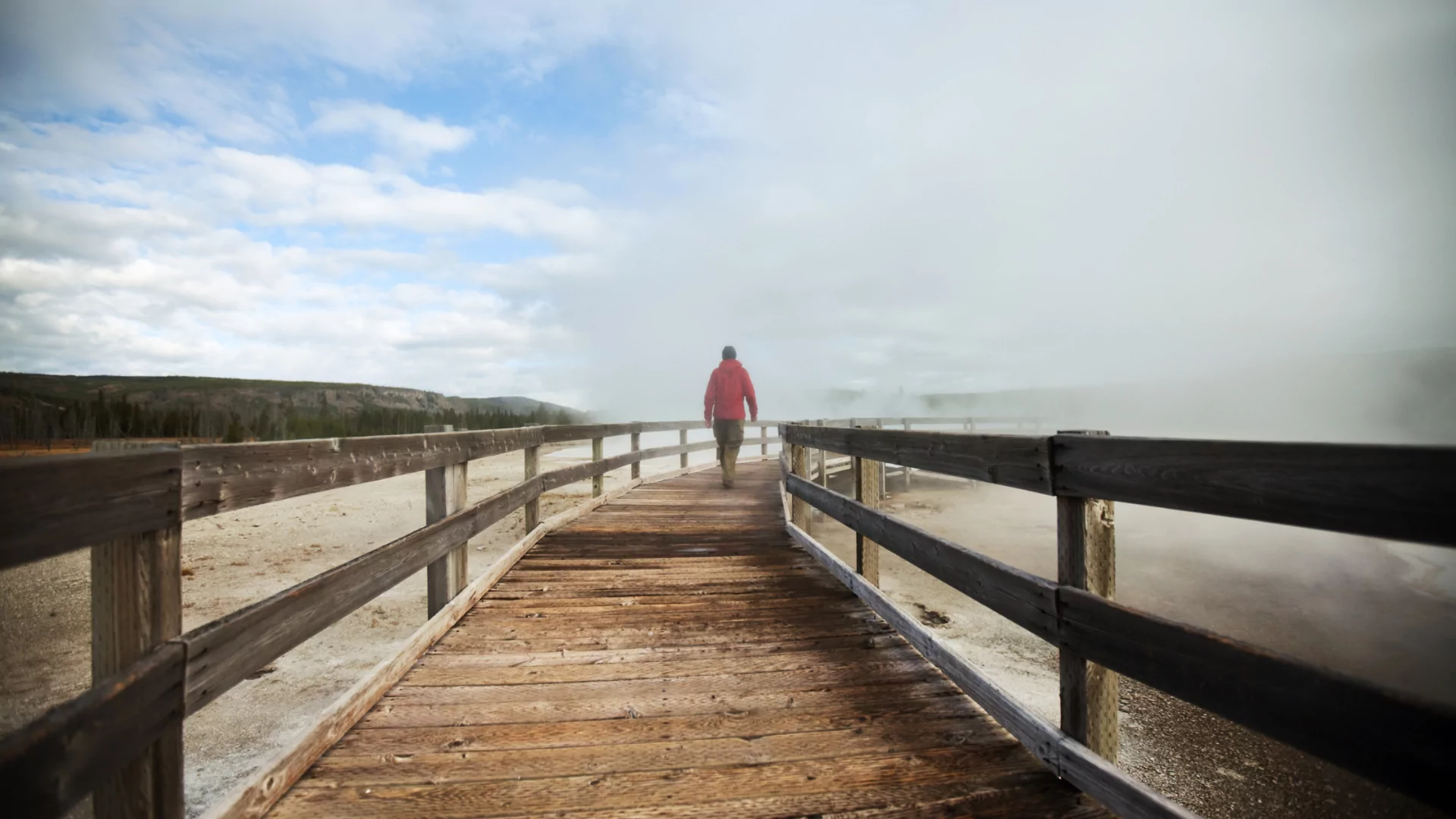Ultimate Guide to Yellowstone National Park

With geysers shooting steam 100ft in the sky, herds of bison roaming vast valleys, and waterfalls roaring in deep canyons, Yellowstone has awed people for thousands of years. The other-worldy scenes this park contains can take years to fully explore and there are still mysteries around every corner.
Yellowstone National Park is the crown jewel of the Greater Yellowstone Ecosystem, spanning across three different states over 3,472 sq miles of land. From the gurgling geyser basins, to snow kissed peaks, to massive natural lakes, Yellowstone National Park has a vastly varied geography that transforms season to season and the park is home to some of North America’s largest and most impressive mammals. From summiting the highest peak at 11,358ft to walking along Reese Creek at 5,282ft, the geological variety offers a variety of activities.
Yellowstone became the United State’s first national park in 1872. Thanks to its unique geology and beauty, it continues to draw in tourists every year. But where is Yellowstone? What are the options for Yellowstone lodging? Our complete guide answers all your Yellowstone questions.
If you’re planning a trip to Yellowstone National Park, this is your guide to where to stay, what to do, what to see, and how to maximize your time in this stunning area.
Where is Yellowstone?
Yellowstone National Park is surrounded by public lands between Bozeman Montana to the north, Cody, Wyoming to the East, Jackson Wyoming to the south, and Idaho to the West. It encompasses more land than Rhode Island and Delaware combined. You can get to Yellowstone in a number of ways and which of the 5 entrances you use will depend on which part of the park you want to explore. Since the park is so large, it is highly recommended to have your own car, rent a car or hire a guide to get around.
This National Park has six distinct regions: Mammoth Country, Roosevelt Country, Canyon Country, Lake Country, Geyser Country, and Bechler Country. The visitor centers, amenities, and lodging vary greatly between each region. Try to decide what your priorities for activities and sight-seeing are for this trip and make a travel and accommodation plan based on those interests so you don’t get stuck driving all day. It can take 4-7 hours to drive the entire Grand Loop of Yellowstone!
How to Get to Yellowstone National Park
The most popular way to get to Yellowstone National Park is by flying into Jackson, Wyoming and then driving 2 hours north, or going on a guided trip through the South Entrance. There are also many other options depending on if you are looking to explore different parts of the park, driving your own vehicle or looking to save money.
- From Bozeman, Montana head south to access the West or North Entrances
- From Billings, Montana use the Northeast Entrance
- From Cody, Wyoming drive in through East Entrance
- From Idaho Falls, Idaho access the seldom visited southwest entrance
- From Salt Lake City, Utah drive 4-7 hours to one of the Southern entrances
Make sure to check for road and entrance closures based on the time of year you are visiting!
When to Visit Yellowstone
Although there is limited access in the winter due to snow and road conditions, Yellowstone National Park is open all-year round. Each season offers unique activities and ever-changing landscapes.
Spring
Mid-March is the official end of the park’s winter season and more roads become accessible with entrances opening up as conditions permit. In early spring, the roads are only open to cyclists, so this can be a great time to have the park to yourself and see some wildlife if you’re daring enough to brave some snow and colder weather. In May, the rain and snowmelt can raise the river-level, causing the waterfalls to swell. The trails will probably be muddy and wet but springtime brings about new life, so there is a good chance you’ll see baby animals in the valleys.
Fall
Autumn can come early in the Yellowstone area with colors changing and a frosty nip in the air as early as September. Also be prepared for snow in the high-country. The rut has begun, so you may hear the elk bugling or see male bison confront each other for mates. Historically, the park is much less crowded at this time.
Winter
Come in the winter to experience the snowy delights the park has to offer. All the roads and entrances are closed except for the Gardiner-Cooke City road. Most roads are limited to snowmobiles and snow coaches. You can still see Old Faithful through a variety of guided tours. You can explore some park trails on skis or snowshoes, just make sure to dress for the weather and make a plan with road closures in mind.
Summer
Summer boasts beautiful t-shirt weather, fields of wildflowers, and the snow melts from the high country. This is the busy season, and over one million people visit Yellowstone National Park in July. You can shake off the crowds pretty quickly if you venture just 1 mile from the main trailhead and enjoy the natural sounds of the ecosystem. Camping and water sports are lovely at this time, but don’t forget the bug spray!
Yellowstone Lodging
Yellowstone lodging options come in a variety of forms from pitching a tent in the middle of the backcountry, to treating yourself in a luxury hotel. Read below to see which Yellowstone lodging option best fits your needs! Finding accommodation in one of the gateway cities (Gardiner, Jackson, Cooke City, West Yellowstone, Red Lodge) could be more budget-friendly and have more availability during the busy season than Yellowstone lodging options inside the park. Remember, this park is massive so decide which area you’d like to focus on before booking accommodation.
Yellowstone Lodging – Hotels and Cabins
- Canyon Lodge and Cabins: There are 5 hotel-style lodges and many rustic cabins.
- Grant Village Lodge: 6 hotel-style lodges located in West Thumb
- Lake Hotel and Cabins: Large lodge and cabin accommodations
- Mammoth Hot Springs Hotel and Cabins: Located in the northern part of the park. Has a large hotel-style lodge and cabins
- Old Faithful Inn: Rustic lodge with hotel-style accommodations
- Old Faithful Lodge: Cabin accommodations
- Old Faithful Snow Lodge: Large lodge with hotel-style rooms and cabin accommodations
- Roosevelt Lodge: Located in the Northeast of the park. Has cabin accommodations
Yellowstone Lodging – Camping
To have a truly wild Yellowstone experience, camping is a great option. The park has over 12 campgrounds with 2,000 established campsites. All sites must be reserved in advance, except for Mammoth Campground which offers first-come-first-serve sites from 10/15-4/1. It is recommended that you make reservations as early as you can in advance, as campsites book up quickly.
What to do in Yellowstone?
From adventurous white water rafting, to quietly observing the wildlife, camping out or enjoying a fancy meal in a lodge, there is something for everyone in Yellowstone National Park.
Yellowstone National Park Hiking Trails
Day hikes of all kinds can be found within the boundaries of the park. Whether you rather forge a creek, summit a high peak, or take a peaceful jaunt through a field of wildflowers, Yellowstone has a system of trails that will keep you busy for a lifetime.
Mt. Washburn- For one of the best views in the park, take this 6.4 mile out and back trail to the lookout tower. You will gain 1,400ft of elevation as you take an old fire road winding up the side of this volcano remnant. From the top, on a clear day, you can get a 360 degree panorama view of the Gallatin Range, the Absarokas, Lake Yellowstone and the Tetons in the far distance.
Fairy Falls and Grand Prismatic Overview- Starting from the Midway-Geyser Basin, take this 5.4 mile hike to a 200ft high waterfall, one of Yellowstone’s most stunning waterfalls.The trail is relatively flat and you’ll meander through a young lodge-pole pine forest. If you want to add a little extra mileage to the hike, take the spur trail up to the Grand Prismatic overview.
Backpacking
While Yellowstone National Park can feel crowded during peak season, a great way to find solitude is by backpacking into the wilderness. There are many backcountry campsites that you can get permits for scattered around the park. From these basecamps, summiting the more isolated peaks or enjoying the private serenity of a hidden lake is possible.
Heart Lake- A moderate 17.4 mile one-way trail which leads to the second largest lake in Yellowstone. Some other highlights of this trek are the Heart Lake thermal basin and views of the 10,285ft Mt Sheridan. The lake offers world class fly-fishing with a high potential to see other wildlife.
Gallatin Crest Traverse- You can get away from the crowds by visiting the less-visited Northwest corner of the park. The lollipop trail is about 25 miles with the option of adding a day hike out to Big Horn Peak. One of the best parts of this trek is reaching Shelf Lake, the highest lake in Yellowstone, and camping at 8,800ft.
Grizzly Lake- This is a short 4.5 mile, there-and-back trail to a serene lake. Spend a day or two along the shore wildlife spotting. If you want a challenge, add on a few days to reach the top of Mt. Holmes, the most southern peak in the Gallatin Range. The total mileage of including this peak is around 22 miles (depending on which route you take) with a gain of 3,579ft and is a very strenuous hike.
Scenic Drives
If your walking legs have had enough trekking, consider taking one of these scenic drives. Maybe you’ll run into a herd of bison in one of the valleys, or wind through beautiful mountain country. You’ll cover a lot more ground in your vehicle!
Beartooth Highway: Take a ride on the “most scenic road in America” as you drive up above tree-line from Red Lodge to Cooke City. What makes this drive so special is the dazzling world of alpine landscape: pristine high-altitude lakes, peaks towering over 12,000ft and cirques carved from glacial action. Time it right in the season to see blooming wildflowers.
Firehole Canyon Scenic Drive: Located within the park near the geyser basins, this 2-mile one way drive takes you across the Firehole river to a waterfall and swimming area. Marvel at the beautiful rhyolitic canyon walls that the river carved.
Wildlife Watching
One of the main draws of Yellowstone National Park is the wildlife viewing and for good reason since it boasts some of the country’s largest and most majestic mammals. This is the Earth’s largest intact temperate ecosystem and with the help of the Greater Yellowstone Ecosystem (all the protected land around the park) the wilderness is vast covering 18 million acres.
Lamar Valley: The “Serengeti of North America”. This is home to large herds of bison, elk and sometimes grizzlies or coyotes. Packs of wolves can also be seen roaming this expansive valley and by talking to a ranger or getting a copy of a wolf observation sheet, you’ll have a greater chance of locating one of the packs.
Hayden Valley: Located more centrally in the park, this can be a great place to make multiple wildlife stops as you’re heading from Lake to Canyon country. Bison can frequently be seen forging the river and walking down the road. In general, spring and fall are the best times to see wildlife. Spring is when many babies are born and the fall is when the rut begins. Try to time your visits at dusk and dawn because that is when there is the most wildlife activity.
Yellowstone River: From the once endangered trumpeter swans to pelicans to majestic birds of prey, Yellowstone National Park is a bird-watchers paradise. There are many lakes and rivers within the park, and one of the most accessible and centrally located bird-viewing areas can be along the Yellowstone River or in the marshes of Yellowstone Lake.
Sports
Each season in Yellowstone offers different possibilities for activities. Venture out on your own or hire a guide to accompany you; some places are only accessible with an outfitter.
Watersports
There are several commercial outfitters outside the park to choose from to fit your needs. You can do a half-day mellow float, adrenaline-filled adventure, and even overnight rafting trips. If flatwater is more your speed, you can bring or rent canoes or kayaks to navigate the many lakes of Yellowstone. There are also tour companies that can take you on scenic, guided paddles.
Horseback Riding
The open valleys and sagebrush flecked plateaus are ideal for horseback riding. Go on a day trip or use horses or other stock animals to assist you on guided backcountry treks.
Biking
One of the most unique cycling experiences you will have is biking through Yellowstone National Park before the roads open to cars in the spring. Be prepared for chilly weather and more snowbanks to navigate around. For summer and fall, most park roads are narrow and don’t have a shoulder to give you a buffer from reckless RV drivers. There are a few trails that are open to bikes, like the old road to Lone Star Geyser and also the access road going around Grand Prismatic.
Fishing
Yellowstone has world-renowned fly fishing rivers along with lakes that are home to cutthroat, rainbow, Mackinaw, and brook trout. Be sure to check the official website for fishing licenses, restrictions, and length of the fishing season.
Snowsports
Cross country skiing, backcountry skiing, snowshoeing, and snowmobiling are possible in the winter season. A few summer trails are maintained as cross country or snowshoeing trails to allow visitors to admire the snowy scenes. Snowmobilers must be accompanied by a guide and follow strict regulations on approved roads.
No matter the season and the type of adventurer you are, Yellowstone National Park has something for everyone. From cross country skiing in the winter across desolate fields to joining the crowds to cheer on Old Faithful, this crown jewel of the National Park System can fill you with delight and awe for years and years to come.



